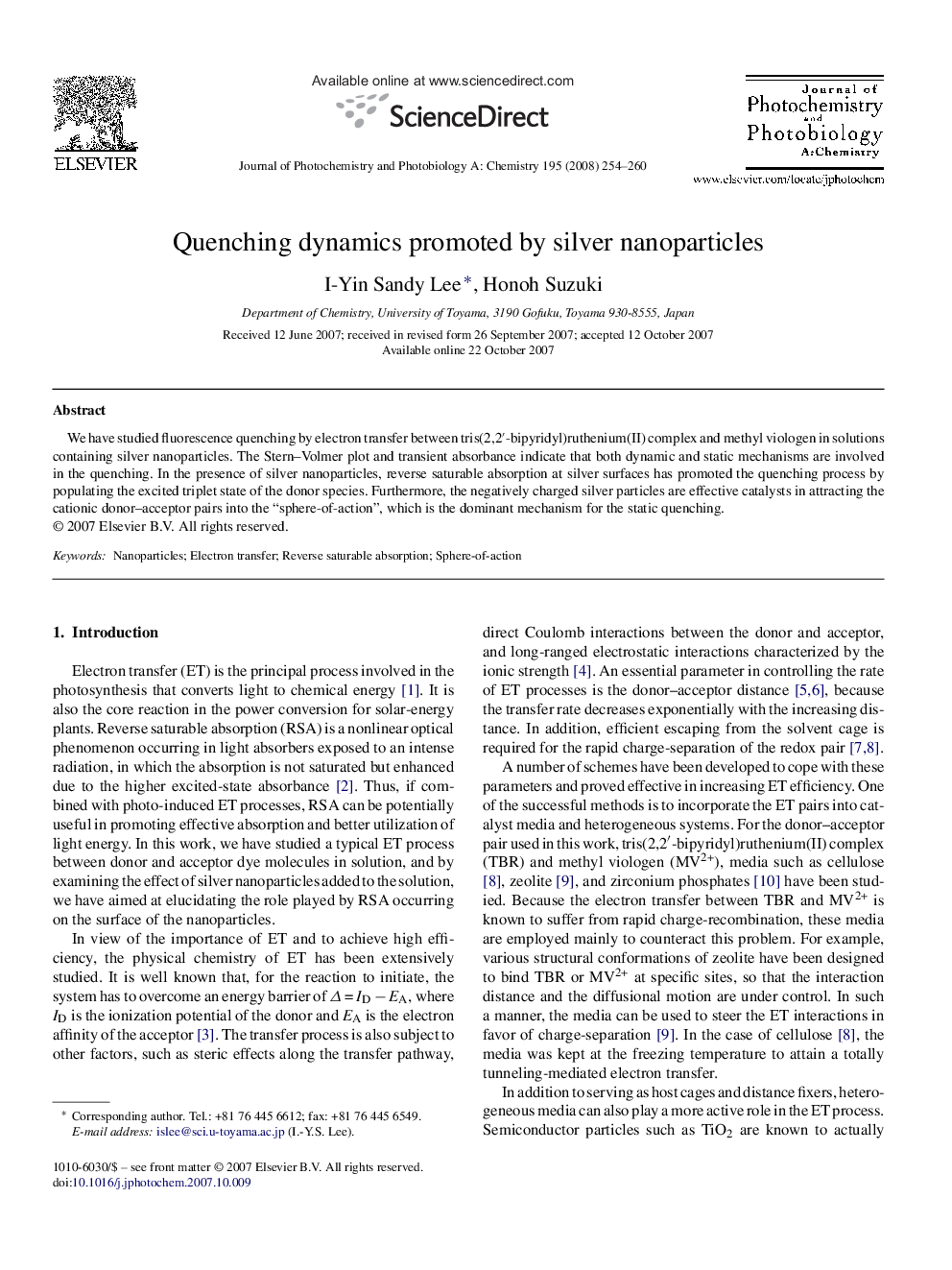| Article ID | Journal | Published Year | Pages | File Type |
|---|---|---|---|---|
| 27723 | Journal of Photochemistry and Photobiology A: Chemistry | 2008 | 7 Pages |
Abstract
We have studied fluorescence quenching by electron transfer between tris(2,2′-bipyridyl)ruthenium(II) complex and methyl viologen in solutions containing silver nanoparticles. The Stern–Volmer plot and transient absorbance indicate that both dynamic and static mechanisms are involved in the quenching. In the presence of silver nanoparticles, reverse saturable absorption at silver surfaces has promoted the quenching process by populating the excited triplet state of the donor species. Furthermore, the negatively charged silver particles are effective catalysts in attracting the cationic donor–acceptor pairs into the “sphere-of-action”, which is the dominant mechanism for the static quenching.
Related Topics
Physical Sciences and Engineering
Chemical Engineering
Bioengineering
Authors
I-Yin Sandy Lee, Honoh Suzuki,
